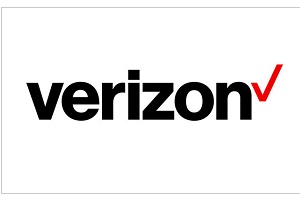New York, United States – Verizon has completed lab trials using 200 MHz of C-band spectrum to provide remarkable 5G speeds and performance. Just last month, Verizon announced it was beginning to deploy 5G over 100 MHz of the spectrum – a significant increase from the 60 MHz of spectrum it has deployed in 5G markets to date. This next move will more than triple the spectrum available for 5G Ultra Wideband in many markets.
“Imagine adding several more lanes to a highway,” says Adam Koeppe, senior vice president of technology and planning at Verizon. “The more lanes, the more cars can get on and off the interstate and the faster they can drive. In the same way, the more spectrum we open up on our network, the more data can move across our network faster and more efficiently.”
Increasing the amount of C-band spectrum being used turbo charges Verizon’s 5G service, offering significantly higher speeds, much greater capacity to accommodate more customers and more robust services, and allows Verizon to offer 5G home broadband and business internet services to more customers.
Verizon won C-Band licenses for between 140-200 MHz in all available markets, and began in the first 46 areas deploying up to 60 MHz. Over the next few years as additional spectrum is cleared by satellite companies, Verizon will be able to deploy 5G Ultra Wideband on all available bandwidth that it has licensed, up to 200 MHz. Every piece of equipment being deployed today is capable of the full 200MHz of bandwidth.
Best spectrum position, best spectrum efficiency
With the recent acquisition of C-band spectrum, Verizon now provides the industry with the strongest spectrum portfolio across low, mid and high band spectrum. Verizon holds a total of 2,035 MHz of spectrum – 294 MHz in Sub 6 GHz spectrum (low and mid band) and 1,741 MHz of mmWave spectrum (high band).
Low band: Verizon’s low band spectrum (nationwide 700 MHz licenses and 850 MHz spectrum) continues to provide the best 4G LTE experience in the industry and now also supports nationwide 5G service, giving customers in over 2,700 markets access to 5G. Low band signals travel great distances and penetrate through walls and dense foliage very effectively.
High band: Verizon’s mmWave build is a critical differentiator and the company continues to expand its mmWave footprint to deliver game changing experiences for the densest parts of the network. mmWave brings the benefits of exceptionally accurate signal waves leading to greater efficiency and less interference for customers, and also boasts huge capacity. mmWave service is ideal to deliver 5G service in high-usage areas like cities, venues, and stadiums for years to come.
Mid-band: Verizon’s mid-band spectrum assets include AWS, PCS, CBRS and C-band spectrum. C-band provides a valuable middle ground between capacity and coverage for 5G networks, and is enabling greater speeds than 5G on low band spectrum and greater coverage than mmWave spectrum for both mobility and home broadband solutions. The addition of C-band spectrum paves the way for Verizon to provide its differentiated service of 5G ultra wideband service to 250 million customers.
Verizon’s strong spectrum position is a result of multi-year strategic planning and investment. Having access to the strongest spectrum portfolio in the market is only half the battle, though. For many years, Verizon has been innovative and creative in its network build to use the spectrum in its portfolio in the most efficient way possible, providing the best experience for customers while carefully controlling deployment and operational costs and maximising advanced technologies to squeeze every possible speed and capacity benefit from its spectrum resources.
“Spectral efficiency is critical as we scale our network and define new, automated, customised ways for customers to use our network” says Koeppe. “We have a long history of efficiently using the assets we have and we intend to continue to flex our engineering muscle as strong stewards of spectrum licenses. Using technologies like carrier aggregation, maximising the build for long term access to spectrum and planning ahead for future spectrum needs has allowed us to engage a highly disciplined approach to efficiently and rapidly make these spectrum resources available to our customers.”
Comment on this article below or via Twitter: @VanillaPlus OR @jcvplus






